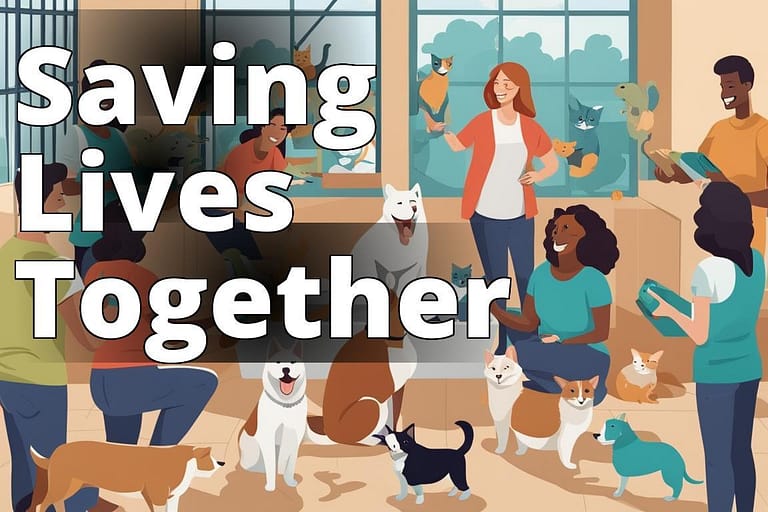Mastering Techniques: Do Cats and Dogs Require Different Training Approaches?
If you’re a pet owner, you know that cats and dogs have vastly different personalities. While some dogs may be eager to please their owners, certain cats may be more independent and harder to train. As such, many pet owners wonder whether their furry companions require different training approaches altogether. In this blog post, we’ll explore the various techniques used in training cats and dogs, and whether or not they differ from one another. Whether you’re a seasoned pet owner or a newcomer to the world of pets, this article is sure to provide valuable insight into the world of animal training.
Understanding the Behavioral Differences Between Cats and Dogs
Cats and dogs are two of the most popular pets in the world, but they have very different personalities and behaviors. Dogs are social animals that thrive on human interaction and love to please their owners. On the other hand, cats are independent creatures that value their personal space and prefer to do things on their own terms. Understanding these behavioral differences is crucial when it comes to training them. Dogs respond well to positive reinforcement, such as treats and praise, while cats require a more subtle approach. They need to feel motivated and engaged in order to learn new behaviors. By recognizing these differences, pet owners can tailor their training techniques to suit the needs of their furry friends and achieve better results.
The Importance of Positive Reinforcement in Training Cats and Dogs
Positive reinforcement is an essential aspect of training both cats and dogs. This method rewards desirable behavior by providing treats, praise, or affection when the animal displays good behavior. Punishing bad behavior can cause fear and aggression in pets, which can lead to further behavioral issues.
When training cats and dogs, it’s important to reward them immediately after they exhibit a desirable action so that they associate the positive experience with the desired response. It’s equally important to be consistent in rewarding good behavior as this helps your pet learn what actions have positive outcomes.
In addition to rewards, using a verbal marker such as “good” or “yes” along with a treat also aids effective conditioning of their behaviors over time. By repeating these cues during training sessions consistently and positively reinforcing ideal responses; owners will develop strong associations among cues from trainers (or owners) and specific behaviours – leading towards long term success with simple commands like sit or come!
Training Techniques for Dogs: What Works and What Doesn’t?
Training techniques for dogs:
When it comes to training dogs, positive reinforcement is the most effective approach. This can include giving treats and verbal praise when they exhibit desired behaviors. Consistency is also key; dogs respond well to routines and consistent commands. It’s important to start with basic obedience training before moving on to more advanced tricks or tasks. Establishing a clear hierarchy in the household will also make training easier, as dogs naturally look for leadership from their human family members.
It’s important to note that punishment-based training methods are not recommended as they can lead to fearful or aggressive behavior in dogs. Physical corrections such as hitting or yelling should never be used.
In addition, socialization is crucial for puppies during their developmental stages. This means exposing them positively to various environments, people, and other animals so that they learn how to interact appropriately with others throughout their lives.

Training Techniques for Cats: How to Keep Them Engaged and Motivated
Understanding the Unique Personality Traits of Cats: Why Traditional Dog Training Methods Don’t Work
Cats have a unique personality that sets them apart from dogs. They are independent, curious, and have a strong sense of territory. Traditional dog training methods, such as punishment-based techniques, do not work well with cats. In fact, they can be counterproductive and damage the bond between you and your feline friend. Instead, positive reinforcement and clicker training are effective techniques for training cats. These methods focus on rewarding good behavior rather than punishing bad behavior. By understanding the unique personality traits of cats and using appropriate training techniques, you can keep them engaged and motivated to learn new behaviors.
Positive Reinforcement Techniques: How to Train Your Cat Without Punishment or Force
Cats respond well to positive reinforcement techniques, which involve rewarding good behavior instead of punishing bad behavior. Use treats, toys, and praise to motivate your cat during training sessions. Clicker training is also an effective method for teaching cats new behaviors. Avoid using punishment or force, as this can cause your cat to become fearful or aggressive. Keep training sessions short and frequent, and always end on a positive note. Remember that cats have their own unique personalities and may require different approaches to training. With patience and consistency, you can successfully train your cat without resorting to punishment or force.
Play-Based Training: Keeping Your Cat Engaged and Motivated Through Interactive Games and Toys
Cats are naturally curious and playful creatures, making play-based training an effective technique to keep them engaged and motivated. Using toys that stimulate their instincts such as chasing, hunting or scratching can help establish a positive association with training. Set up interactive games using laser pointers or wand toys to encourage your cat’s curiosity while rewarding them with treats for correct responses. Remember not to force your cat into participating in the game, allow them to take breaks when they lose interest so they don’t associate negative feelings towards the activity. Incorporating playtime into daily routines can also make training feel less like a chore for both you and your furry friend.
Clicker Training: Using Sound to Reinforce Positive Behaviors in Cats
Clicker training is a popular positive reinforcement technique that can be used to train cats. This method involves using a small handheld device that makes a clicking sound when pressed. The clicker is used to mark the exact moment when the cat performs a desired behavior, such as sitting or coming when called. The cat then receives a reward, such as a treat or praise. Over time, the cat learns to associate the sound of the clicker with positive reinforcement and will begin to repeat the desired behavior more frequently. Clicker training can be an effective way to keep cats engaged and motivated during training sessions, as it provides clear feedback and rewards for good behavior.

Common Challenges in Training Cats and Dogs and How to Overcome Them
Common Challenges in Training Cats and Dogs and How to Overcome Them**
Training cats and dogs can be a challenging task, especially if you’re not familiar with their behavioral differences. One of the most common challenges is getting them to respond to commands consistently. Dogs are generally more responsive to training, while cats tend to be more independent and may require more patience.
Another challenge is dealing with their natural instincts. Dogs have a strong pack mentality, which means they need a leader to follow. Cats, on the other hand, are solitary creatures that prefer to do things on their own terms.
To overcome these challenges, it’s important to use positive reinforcement techniques consistently. Rewarding good behavior with treats or praise can help both cats and dogs understand what you expect from them. It’s also important to be patient and consistent with your training approach.
For cats, it’s important to keep training sessions short and engaging. Using toys or treats as rewards can help keep them motivated and interested in the training process. For dogs, it’s important to establish yourself as the pack leader through consistent training and clear communication.
By understanding the unique challenges of training cats and dogs, you can develop effective strategies that work for both pets in your household. With patience, consistency, and positive reinforcement techniques, you can successfully train your furry friends to be well-behaved companions.
Tips for Successfully Training Both Cats and Dogs in a Multi-Pet Household
Multi-pet household can be challenging when it comes to training both cats and dogs. It’s important to establish rules and boundaries for both pets and ensure that they understand what is expected of them. Start by training each pet separately, using positive reinforcement techniques that work best for their respective species. Once they have mastered basic commands, gradually introduce them to each other under supervision. Encourage positive interactions between them and reward good behavior. If there are any conflicts, separate them immediately and try again later. Consistency is key in training both cats and dogs in a multi-pet household, so make sure everyone in the household is on the same page. With patience, persistence, and lots of treats, your furry friends can learn to coexist peacefully and happily together.
In conclusion, cats and dogs are two very different animals with unique behavioral tendencies. However, both can be trained with the right approach and using positive reinforcement techniques. By understanding their differences and tailoring your training methods to each pet’s needs, you can help them develop good habits that will last a lifetime.
Remember to also stay patient and consistent in your efforts, while being mindful of any challenges that may arise. With time and effort, you’ll likely see great results in helping your pets become well-behaved companions.
If you’re looking for quality pet training resources or accessories for cats or dogs alike, don’t forget to check out our shop! We offer everything from treats to toys that can aid in training success. Visit us today for all your furry friends’ needs!
Questions
Q: Who is friendlier, cats or dogs?
A: Dogs are generally friendlier than cats due to their social nature.
Q: What are some similarities between cats and dogs?
A: Both cats and dogs are mammals and require food, water, and exercise.
Q: How can cats and dogs coexist peacefully in the same household?
A: Introduce them slowly, supervise their interactions, and provide separate resources.
Q: Who is more independent, cats or dogs?
A: Cats are more independent than dogs, as they are solitary hunters by nature.
Q: What are some reasons why cats and dogs may not get along?
A: They may have different personalities, past experiences, or territorial instincts.
Q: How can I prevent my cat from chasing my dog?
A: Provide high perches for the cat to escape to, distract the cat with toys, and supervise their interactions.




Leave a Reply